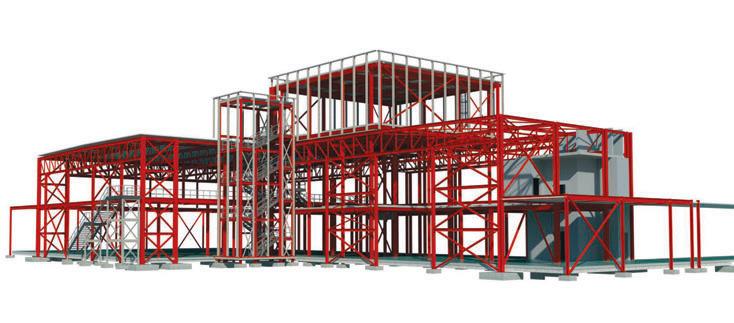Review
Autodesk ReCap In 2012 Autodesk launched ReCap, a platform for the growing reality capture market. Since then, the company has expanded its capabilities, added a layer of cloud services and recruited third party developers. by Martyn Day
T
he manual survey market was revolutionised by the widespread adoption of laser scanners, which can measure millions of 3D points in seconds, building dense point clouds of surfaces. But there remain a number of downsides to the technology. Laser scanners are typically hard to use, expensive and generate huge, unintelligent, process-intensive, files. Autodesk has recognised that the laser scanning software market was ripe for a wider audience, and that it could offer a competitive product and provide tools to enable the conversion of ‘dumb’ scan data to intelligent Building Information Modelling (BIM) models with its ReCap software. At the same time, the laser scanning market has started to see some disruptive technologies, such as the Xbox Kinect, open up new possibilities to potentially lower price points for capturing real-world
data in these point clouds. Typically, laser scanners can cost £40K and upwards and the software to edit and manage the point clouds can cost over £10K a seat. Laser scanner hardware provider Faro has been instrumental in introducing new, low-cost price points (to around £20k) with its small professional scanners. This has increased adoption of laser scanning, and yet to date the software has remained an expensive but necessary add-on.
Autodesk ReCap There are two offerings in Autodesk’s ReCap platform: ReCap Pro, a Windowsbased point cloud registration and manipulation program and ReCap 360, an add-on service that uses capabilities in Autodesk’s cloud to provide a portal for laser-scan or photo captured projects. ReCap Pro is aimed at proving targetless registration of scans in the field and
could run on a laptop or Windows Surface tablet, collating and importing multiple laser scans in real time. While ReCap includes some innovative targetless registration capabilities to assist in alignment of multi-scans, early adopters did wrestle with the accuracy of its results versus traditional target-based registration. In the latest version accuracy can be improved by adding survey points or known distances. Essentially, ReCap Pro enables the processing, cleaning, and visualisation of large data sets on the desktop from laser scans. It is hardware independent and supports the import of over 20 industry proprietary, text-based and open formats. The software has a modern, easy to use interface and provides a suite of tools to clean up, edit and organise laser scans. The data alignment between scans can be done by electing the same objects in
Next generation scanners New low-cost scanners are typically hand held. They provide low resolution scans, and are therefore perhaps best used for interiors or individual objects. 3D Systems Sense’s 3D scanner costs just $399. It is aimed at non-professionals capturing small objects in 3D using the same technology as Microsoft’s Kinect. 3D Systems software optimises its output for its 3D printers. . ■ cubify.com/en/Products/Sense
28
May / June 2014
p28_29_30_AEC_MAYJUNE14_ReCap.indd 28
dotproduct offers a sub$5,000 hand held scanner, the DPI-7, which consists of a cradle / handle and an Android 7” standard tablet. The Phi-3D software uses an indoor positioning system to build a 3D map from the scanner. Once enough points have been gathered to create a map, the screen turns green. Intel recently invested a large sum in the firm. ■ dotproduct3d.com
Zebedee’s ZEB1 is an unusual looking handheld scanner with a spring mounted sensor. The scanner was developed by CSIRO scientist Dr Elliot Duff and his ‘Zebedee Team’, in honour of the children’s TV programme, The Magic Roundabout. The device is able to survey enclosed spaces where GPS cannot reach, such as inside mines, factories & public buildings. ■ tinyurl.com/zebedeescan
www.AECmag.com
20/5/14 17:14:05








